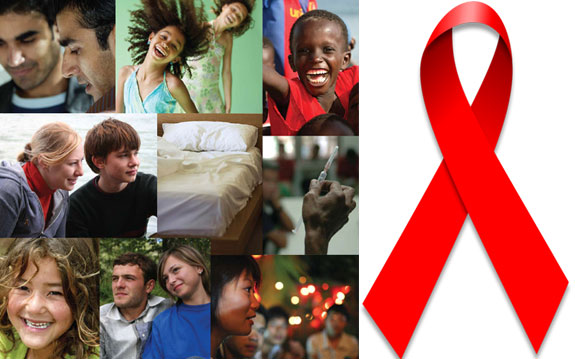
“The theme of this year’s World AIDS Day is Universal Access and Human Rights. For me, that means doing everything we can to support countries to reach their universal access goals for HIV prevention, treatment, care and support – all the while protecting and promoting human rights.”
– UNAIDS Executive Director Michel Sidibé
2009 World AIDS Day message
Top 8 Things to Know About AIDS/HIV in America
Where HIV lives today.
Posted by Jeri_at_Health on Monday, November 30, 2009 11:39 AM
It’s been 28 years since AIDS was first identified in the United States. Many still believe the virus to be one that belongs to sub-Saharan Africa. Yet, more people than ever before are living with HIV today in America.
At the end of 2007, the CDC estimated that 468,578 of us live with AIDS, up by 20,000 since 2006. The real story though is that many public health officials believe the actual number to be around 1.1 million. This large discrepancy is due to factors like anonymous testing services and those who may be living with the infection but have not yet been diagnosed.
On World AIDS Day 2009, I wondered where we are now. Here’s a snapshot of where HIV lives in America today, who is at risk, and what’s being done to curb this persistent epidemic.
1. Gender prevalence
Just over 75 percent of adults and adolescents living with AIDS are men.
2. Race prevalence
The three leading groups most impacted by the infection are black/African American at 44.1 percent, white at 35.1 percent, and Hispanic/Latino at 19.1 percent.
3. How are we infected?
More than two-thirds of infections in the U.S. occur via male-to-male sexual contact. Heterosexual contact accounted for 83 percent of diagnoses among women. Injection drug use was the culprit in 10 percent of male and 16 percent of female diagnoses in 2007. HIV was diagnosed in 159 children in 2007, all but 20 who became infected by mother-to-child transmission.
4. Where does the infection live?
The HIV/AIDS epidemic in America was once concentrated mainly in the gay populations on the East and West coasts. However, in recent years AIDS has become increasingly prevalent within black and Latino communities in many Southern states. Highest infection concentrations were found in Texas, California, Florida, Georgia and New York. The lowest numbers were in Montana, North Dakota, South Dakota and Wyoming. In 2007, the highest rates of new diagnoses were in Miami, New Orleans, and Washington D.C.
5. What prevention efforts have been most successful?
One of the most successful efforts toward prevention has been intervention of mother-to-child transmission and antiviral therapies. Mother-to-child transmission has been drastically reduced in the U.S. due to access to antiretroviral therapies, testing and counseling, and safer delivery practices.
6. Stigma
In October 2009, President Obama announced that America’s ban on entry into the country for HIV positive people, would be lifted as of January 2010. The ban, which was instituted in 1987, restricted all HIV positive people from entering the country, whether they were on holiday or visiting on a longer-term basis. Those who did not hold an approved medical waiver form (which was often difficult to acquire) risked being barred entry or deported if they test HIV positive or were found to be carrying antiretroviral medication.
7. Government funding
The 2009 budget request for HIV and AIDS domestic spending is estimated at just over $18 billion. Of this, roughly 68 percent is for care, 15 percent for research, 10 percent for cash and housing assistance, and 4 percent for prevention.
8. Children and HIV
Approximately 9,000 children under 13 years of age have been diagnosed with AIDS in America. Of those, close to 90 percent were likely infected via mother-to-child transmission. Most others were infected through receipt of blood, blood products or tissue.
Today’s a day to take action. Talk about HIV prevention with your friends and family. If you’ve engaged in high risk behaviors, get tested for HIV and most importantly, support those living with HIV and AIDS with your compassion and understanding.
Sources: CDC Statistics, Avert
More on HIV/AIDs
